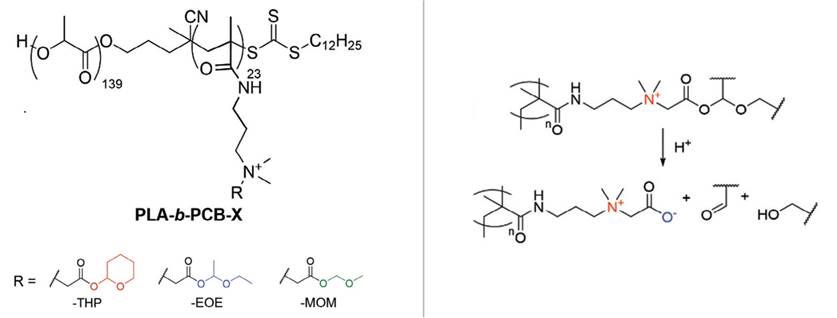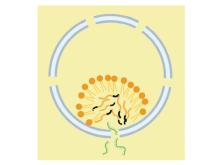BACKGROUND
Lipid nanoparticles (LNPs) are a promising vehicle for delivering RNA-based therapeutics, but their efficiency is often hampered by low RNA release following endosome disruption. After LNPs are taken up by cells through endocytosis, they must escape the endosome to release their RNA payload into the cytoplasm. However, this endosomal escape is a significant bottleneck. Many LNPs fail to efficiently disrupt the endosomal membrane, leading to the entrapment and degradation of the RNA within the endosome. This limited release reduces the overall efficacy of the RNA therapeutics, as insufficient RNA (<5%) reaches the cytoplasm to be translated into the desired proteins. Enhancing the endosomal escape capabilities of LNPs is therefore crucial for improving the delivery and effectiveness of RNA-based treatments.
TECHNOLOGY
Researcher at the University of Toronto have developed a novel technology involving the use of acid-responsive polymer additives to enhance RNA transfection from lipid nanoparticles (LNPs). The researchers synthesized three acid-responsive poly(lactic acid)-block-poly(carboxybetaine) (PLA-b-PCB) zwitterionic derivatives that are cationic at physiological pH but become neutral at endosomal pH, reducing their affinity for RNA. These polymers were incorporated into existing LNP formulations (Onpattro, Moderna, or Pfizer) to create hybrid polymer-lipid nanoparticles (PLNPs). The PLNPs demonstrated significantly improved RNA release and transfection efficiency compared to conventional LNPs, with up to a 5.4-fold decrease in IC50 values for small interfering RNAs (siRNAs) and an up to two-fold increase in messenger RNA (mRNA) transfection. The enhanced cytosolic RNA is attributed to increased RNA dissociation from the carrier due to the acid-responsive nature of the polymers. This technology represents a versatile strategy to improve the delivery and effectiveness of RNA-based therapeutics.

Figure 1. Acid-responsive polymers PLA-b-PCB-tetrahydropyranyl (THP), -ethoxyethyl (EOE), and -methoxymethyl (MOM) (left). Proposed mechanism for acid-responsive hydrolysis and charge neutralization of pendant groups of PLA-b-PCB-X polymers (right).
COMPETITIVE ADVANTAGE
- Enhanced RNA Release: RNA dissociates more effectively from the carrier, enhancing its bioavailability and therapeutic potential.
- Increased Transfection Efficiency: Up to a 5.4-fold decrease in IC50 values for siRNAs and up to a two-fold increase in mRNA transfection compared to conventional LNPs.
- Reduced Cytotoxicity: Reduced need for high concentrations of ionizable lipids, which are often associated with adverse effects.
- Versatility: The technology can be incorporated into various existing LNP formulations, including those used by Onpattro, Moderna, and Pfizer, making it broadly applicable.
- Broad Applicability: The technology is effective across multiple cell lines and types of RNA, including siRNA and mRNA, making it suitable for a wide range of RNA-based therapeutics.
APPLICATIONS
- RNA therapeutic delivery
INTELLECTUAL PROPERTY STATUS
- Provisional patent application (Aug 2024)
PROJECT STATUS
Proof-of-concept studies have been conducted in cell lines. The polymers have been incorporated into LNP formulations (Onpattro, Moderna, or Pfizer) and demonstrated significantly improved RNA transfection efficiency compared to conventional lipid nanoparticles alone.





